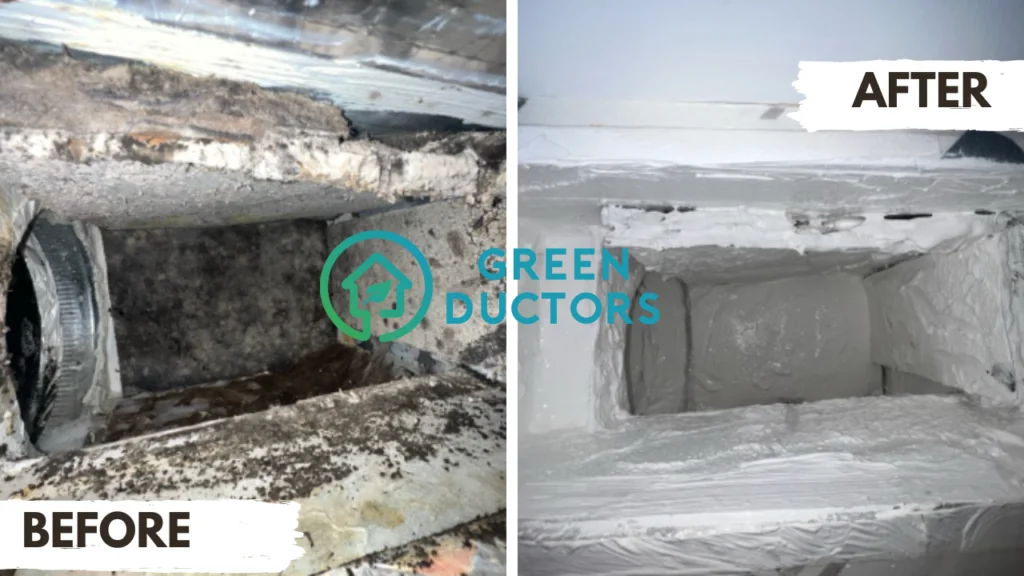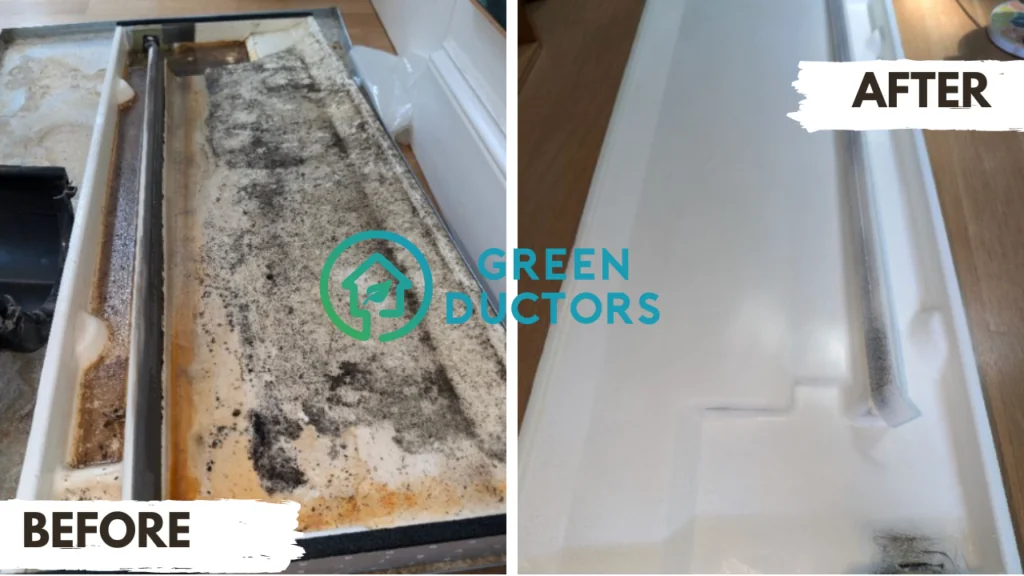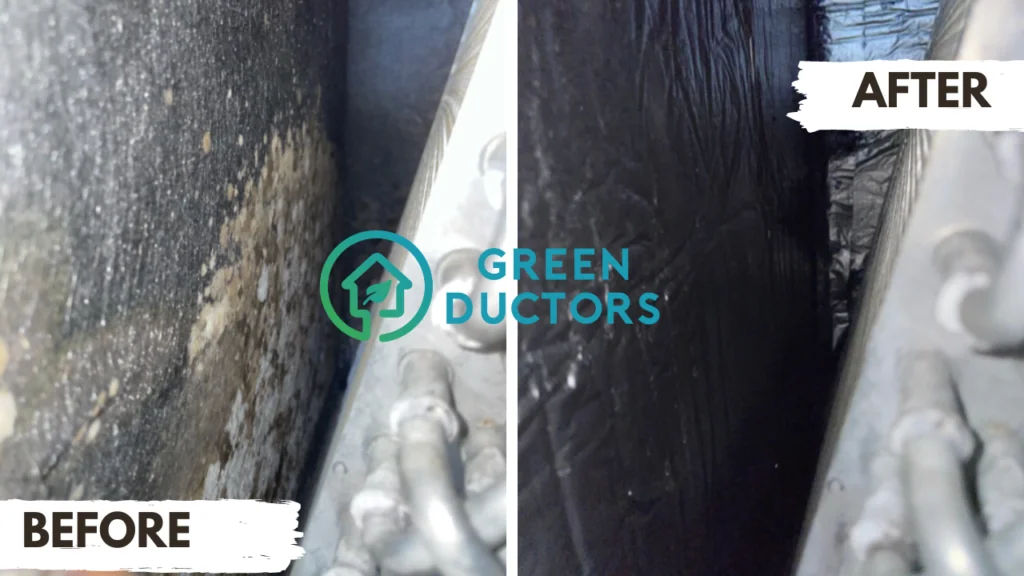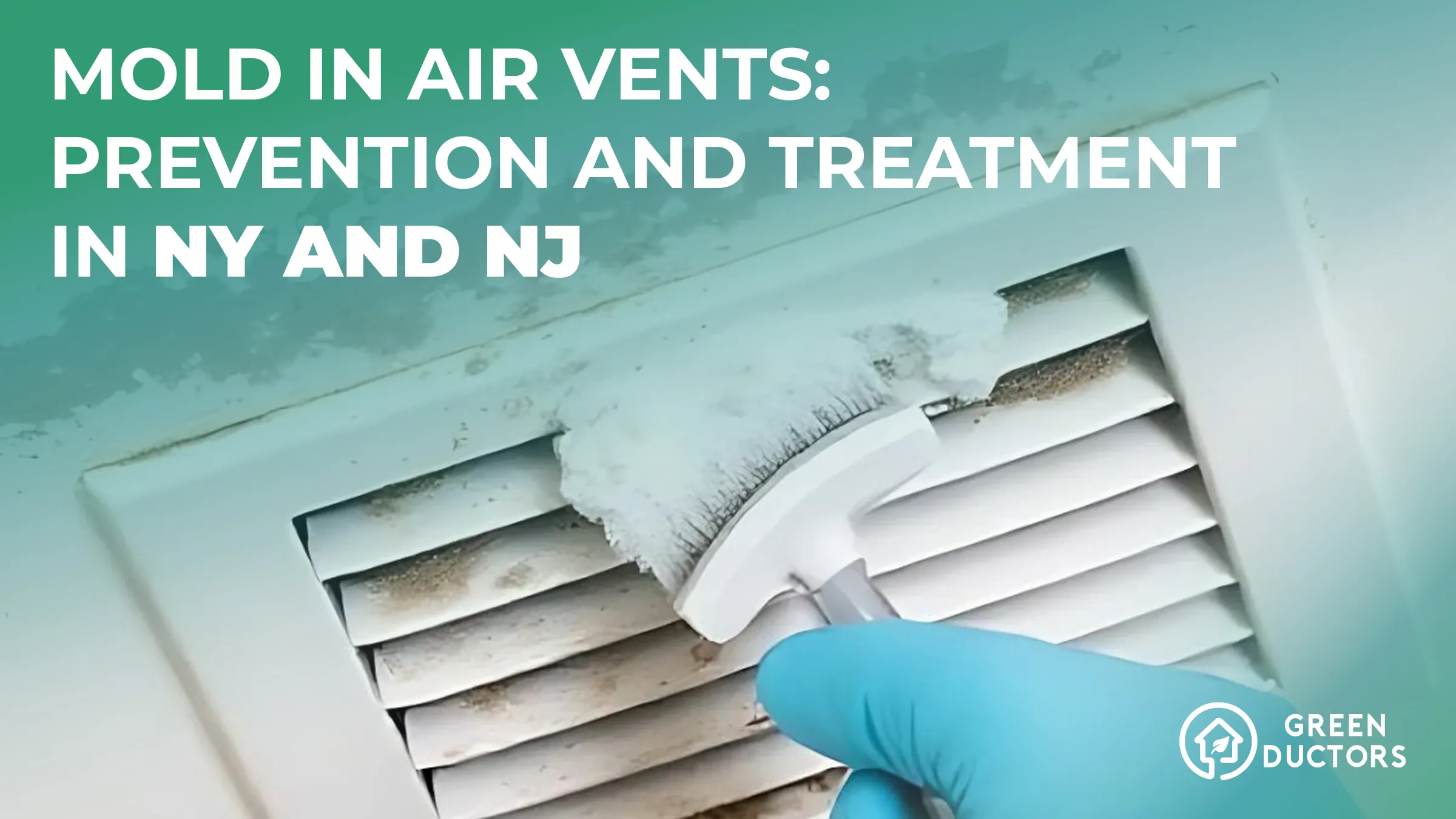Mold, the pesky culprit we love to talk about. Its presence can lead to an onset of symptoms, especially impacting those with existing respiratory issues. These symptoms can often be referred to as “mold toxicity” and can affect anyone that comes into contact with mold, not only the susceptible. The tricky thing is, if mold spores are present and become airborne, they can stay in the air for an indefinite amount of time, and having an HVAC system recirculate spores throughout the home isn’t doing you or your home any favors.
What You Need to Know About Mold in Vents
There are different kinds of mold. Not all mold (like Cladosporium) are harmful to health. However, there are varieties (like Stachybotrys Chartarum) that can be highly toxic. Stachybotrys Chartarum is the species that’s typically referred to as “black mold” or “toxic mold”. It tends to have a distinct smell, often compared to rotting leaves. Black mold also tends to favor porous, organic surfaces like wood and drywall. The good thing being, is that toxic black mold typically requires extremely high humidity levels (over 90%) to grow, the bad thing being, that mold in general requires 35-70% humidity to appear. With that being said, be mindful that not all molds are toxic, and not all toxic molds are black. So is mold on air vents dangerous? Probably not, as Stachybotrys Chartarum doesn’t typically grow on such surfaces. But just because it isn’t likely, doesn’t mean that it isn’t possible. The only way to truly know the type of mold you have, is to test.

How to Detect Mold in AC Vents
The first and most obvious check would be to simply look. Is there visible mold around the air vents? Be sure to also take off your vent covers and see if you spot mold in the vents, use a flashlight. Do you see dark black spots? Are you noticing a musty smell? Smell is one of the easiest tell-tale signs of the presence of mold in air ducts and in general. If the smell intensifies when your HVAC system is in use, it’s extremely likely that there’s mold inside the vents. Diagnosing the spots you see outside the system tends to be rather easy, and cleanup isn’t that difficult, it’s what’s deep inside the system that often poses the biggest problems. As air circulates and moves the mold particles throughout the home, you can typically notice the following symptoms start to arise:
- Allergies
- Persistent headaches
- Difficulty breathing
- Fatigue
- Nausea or dizziness
If in doubt on whether or not you have mold in the vents, call professionals, like us, to check your system(s) out.
Why Is Mold Growing in Your Air Vents?
Simply put, mold loves moisture. Where there’s moisture, there’s a high chance of growth, mold on air vents included. Some reasons for mold growth include:
- If a room isn’t well-ventilated, it can lead to mold growth.
- If your AC unit is producing excess condensation, it can lead to mold growth.
- If there has been any kind of leak whether it be from the roof, from the plumbing, or from the windows, it can lead to mold growth.
- If your home has flooded, it can lead to mold growth.
- If your ductwork is faulty, it can lead to mold growth.

Some aspects can be out of our control. But you certainly can take precautions to improve your chances of staying mold free. For example:
- By opening windows and using your ceiling fans to avoid the stagnation of air.
- By monitoring the humidity levels inside the home and investing in a dehumidifier if needed.
- By promptly addressing and remediating any leaks.
- By consistently monitoring your home’s heating and air conditioning systems.

How to Keep Your Air Vents Clean and Safe
For what you visually see, you can wipe down with an appropriate solution. Lots of recipes exist online, simply have a look. For what you don’t see, you need to call the professionals. Top rated, NADCA certified companies, like Green Ductors, have the knowledge and tools needed to thoroughly clean your ducts and vents. We’re also able to provide mold remediation services should you need them. We advise having your system professionally checked at least once a year, and the HVAC system should be professionally cleaned every 2-4 years. If you experience issues with leaks, poor ventilation or insulation, cleaning more frequently won’t hurt. So don’t wait, and contact or call our team at (888)334-1612 today!

